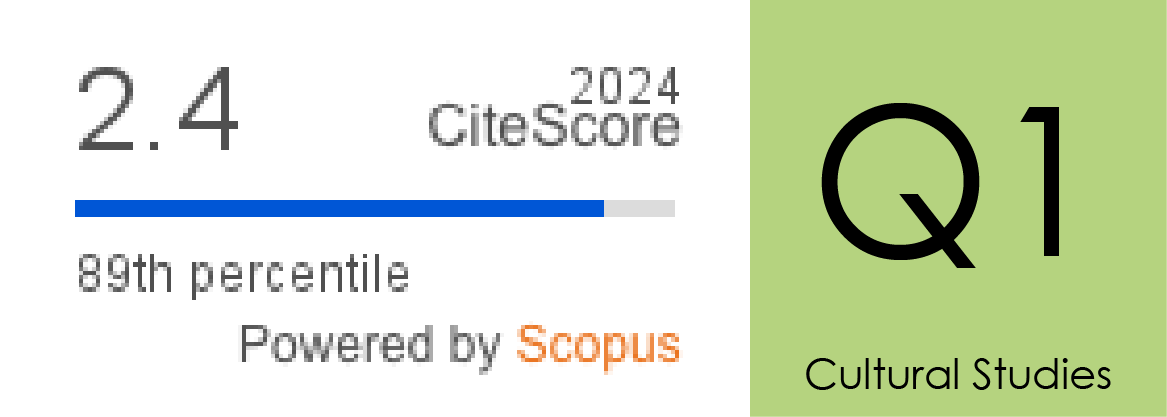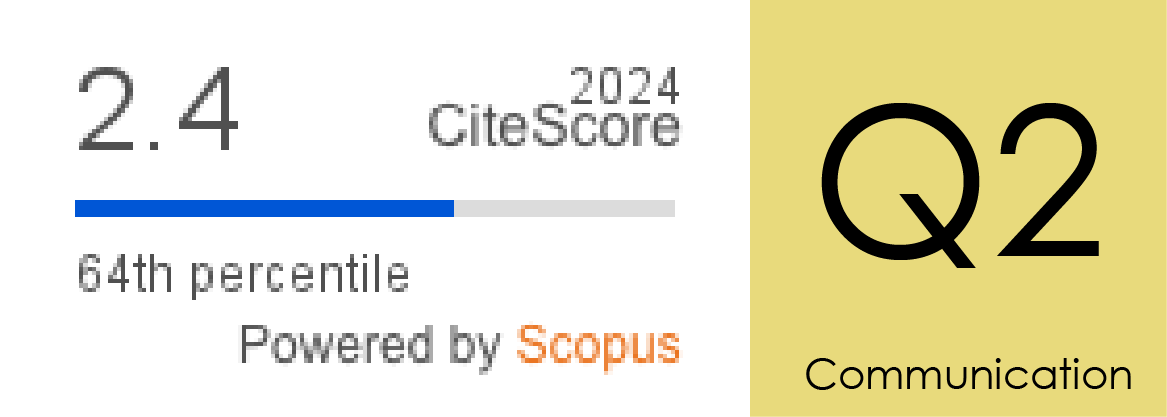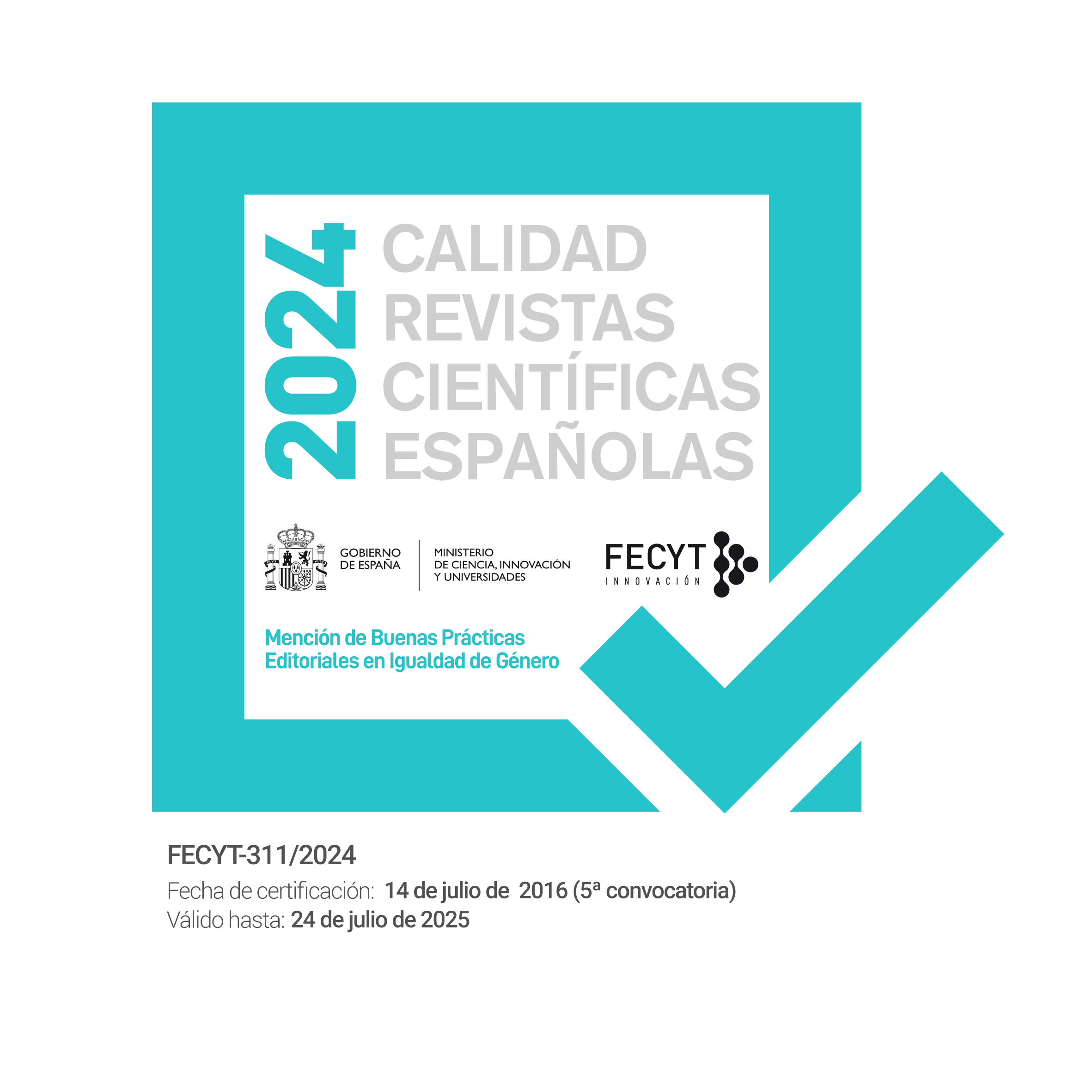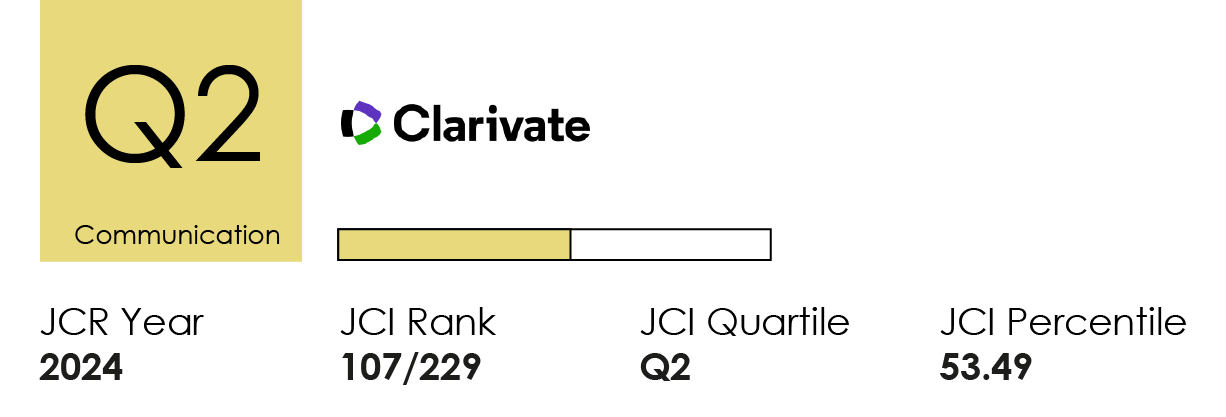Smartphone, menores y vulnerabilidades. Revisión de la literatura
DOI:
https://doi.org/10.14198/MEDCOM2019.10.2.5Palabras clave:
dispositivos móviles, smartphone, menores, vulerabilidad, riesgos, adolescentesResumen
En la última década ha proliferado la literatura académica sobre los riesgos y oportunidades de las actividades en red entre los niños y jóvenes. El crecimiento exponencial del uso de los dispositivos digitales y nuevas aplicaciones está cambiando las condiciones de acceso a Internet de los niños, esto implica la aparición de nuevos desafíos en términos de seguridad en la red. Hoy en día los teléfonos inteligentes acompañan a los menores en cualquier momento y lugar más allá de la supervisión de sus padres, y la vida en línea se convierte en una experiencia más privada. En este documento se realiza una revisión de la literatura desde 2011 a 2017, con el fin de identificar nuevos riesgos y amenazas asociados a la propagación de dispositivos móviles, particularmente teléfonos inteligentes. Al mismo tiempo, se discuten las vulnerabilidades potenciales que se han analizado en la investigación empírica y los hallazgos de estos estudios sobre esta relación. Todos estos aspectos se analizarán para descubrir los cambios en los factores de vulnerabilidad emergentes que están asociados con los dispositivos móviles en comparación con el acceso al ciberespacio a través de los ordenadoresCitas
Adams, S. K.; Daly, J. F. & Williford, D. N. (2013). Adolescent sleep and cellular phone use: recent trends and implications for research. Health Services Insights, 6, 99-103. https://doi.org/10.4137/HSI.S11083
Alfaro González, M.; Vázquez Fernández, M. E.; Fierro Urturi, A.; Herrero Bregón, B.; Muñoz Moreno, M. F. & Rodríguez Molinero, L. (2015). Use and risks of information and communication technologies in the adolescents from 13 to 18 years. Acta Pediátrica Española, 73(6), 146-151. Disponible en https://bit.ly/2TeLMix
Álvarez-García, D.; Pérez, J. C. N.; González A. D. y Pérez, C. R. (2015). Factores de riesgo asociados a cibervictimización en la adolescencia. International Journal of Clinical and Health Psychology, 15(3), 226-235. https://doi.org/10.1016/j.ijchp.2015.03.002
Aydin, D.; Feychting, M.; Schüz, J.; Tynes, T.; Veje Andersen, T.; Samsø Schmidt, L. […] Röösli M. (2011). Mobile Phone Use and Brain Tumors in Children and Adolescents: A Multicenter Case–Control Study. JNCI Journal of the National Cancer Institute, 103(16), 1264–1276. https://doi.org/10.1093/jnci/djr244
Barbovschi, M.; O’Neill, B.; Velicu, A. & Mascheroni, G. (2014). Policy Recommendations. Milano: Net Children Go Mobile. Disponible en https://bit.ly/2qR1dxi
Bragazzi, N. L. & Del Puente, G. (2014). A proposal for including nomophobia in the new DSM-V. Psychology research and behavior management, 7, 155—160. https://doi.org/10.2147/PRBM.S41386
Barujel, A. G.; Varela, F. F. y Rodes, V. (2017). Niños y adolescentes frente a la Competencia Digital. Entre el teléfono móvil, youtubers y videojuegos. Revista interuniversitaria de formación del profesorado, (89), 171-186. Disponible en https://bit.ly/2U926yk
Cánovas, G.; García-de-Pablo, A.; Oliaga-San-Atilano, A. y Aboy-Ferrer, I. (2014). Menores de edad y conectividad móvil en España: Tablets y Smartphones. Madrid: Centro de Seguridad en Internet para los Menores en España. Protégeles (dependiente Safer Internet Programme de la Comisión Europea).
Catalina García, B.; López de Ayala López, M. C. y García Jiménez, A. (2014). Los riesgos de los adolescentes en Internet: los menores como actores y víctimas de los peligros de Internet. Revista Latina de Comunicación Social, 69(4), 462-485. https://doi.org/10.4185/RLCS-2014-1020
Cuesta-Cambra, U. (2012). Uso “envolvente” del móvil en jóvenes: propuesta de un modelo de análisis. Estudios sobre el mensaje periodístico, 18, 253-262. https://doi.org/10.5209/rev_ESMP.2012.v18.40979
Cuesta-Cambra, U. y Gaspar Herrero, S. (2013). Análisis motivacional del uso del smartphone entre jóve¬nes: una investigación cualitativa. Historia y Comunicación Social, 18, 435-447. https://doi.org/10.5209/rev_HICS.2013.v18.44252
Cheever, N. A.; Rosen, L. D.; Carrier, L. M. & Chavez, A. (2014). Out of sight is not out of mind: The impact of restricting wireless mobile device use on anxiety levels among low, moderate and high users. Computers in Human Behavior, 37, 290-297. https://doi.org/10.1016/j.chb.2014.05.002
Cho, S. & Lee, E. (2015). Development of a brief instrument to measure smartphone addiction among nursing students. CIN: Computers, Informatics, Nursing, 33(5), 216–224. https://doi.org/10.1097/CIN.0000000000000132
Chung, N. (2011). Korean adolescent girls' addictive use of mobile phones to maintain interpersonal solidarity. Social Behavior y Personality: an international Journal, 39(10), 1349-1358. https://doi.org/10.2224/sbp.2011.39.10.1349
David, P.; Kim, J. H.; Brickman, J. S.; Ran, W. & Curtis, C. M. (2015). Mobile phone distraction while studying. New media y society, 17(10), 1661-1679. https://doi.org/10.1177/1461444814531692
Durán, M. & Martínez-Pecino, R. (2015). Cyberbullying trough Mobile Phone and the Internet in Dating Relationships among Youth People. Comunicar, 22(44), 159-167. https://doi.org/10.3916/C44-2015-17
Echeburúa, E. (2012). Factores de riesgo y factores de protección en la adicción a las nuevas tecnologías y redes sociales en jóvenes y adolescentes. Revista española de drogodependencias, 37(4), 435-448. Disponible en https://bit.ly/1YiXSQw
Fernández Muñoz, C. & García García, F. (2016). The use of mobile phones as tools for Access and knowledge Exchange by students in Spain when studying. Prisma Social, 1, 190-208. Disponible en https://bit.ly/2EblWlW
Fundación Telefónica (2017). Sociedad Digital en España 2017. Disponible en https://bit.ly/2lOc7RH
Garaigordobil, M. (2011). Prevalencia y consecuencias del cyberbullying: una revisión. International Journal of Psychology and Psychological Therapy, 11(2), 233-254. Disponible en https://bit.ly/2Sujn3w
García-Rodríguez, A. y Gómez-Díaz, R. (2017). Literatura digital infantil y juvenil en tabletas y smartphones: una oportunidad para lograr nuevos lectores. Anuario ThinkEPI, 11. https://doi.org/10.3145/thinkepi.2017.30
Garmendia, M.; Jiménez, E.; Casado, M. A. & Mascheroni, G. (2016). Net Children Go Mobile: Riesgos y oportunidades en internet y el uso de dispositivos móviles entre menores españoles (2010-2015). Madrid: Red.es/Universidad del País Vasco/Euskal Herriko Unibertsitatea. Disponible en https://bit.ly/2ImLMYh
Gil, F.; Oberst, U.; Del Valle, G. y Chamarro, A. (2015). Nuevas tecnologías-¿Nuevas patologías? El Smartphone y el fear of missing out. Aloma: Revista de Psicologia, Ciències de l'Educació i de l'Esport, 33(2), 77-83. Disponible en https://bit.ly/2H3G2By
Haddon, L. & Ólafsson, K. (2014). Children and the mobile Internet. In G. Goggin & L. Hjorth (Eds.), The Routledge Companion to Mobile Media (pp. 300-311). Abingdon, UK: Routledge.
Haug, S.; Paz Castro, R.; Kwon, M.; Filler, A.; Kowatsch, T. & Schaub, M.P. (2016). Smartphone use and smartphone addiction among young people in Switzerland. Journal of Behavioral Addictions, 4(4), 299-307. https://doi.org/10.1556/2006.4.2015.037
Instituto Nacional de Estadística (INE) (2017). El consumo de tecnologías de la información y comunicación en los hogares españoles. Disponible en https://bit.ly/2zppDTM
Jang, I. S. & Park, S. (2015). Factors affecting on smartphone addiction according to the classification of addiction-risk groups among college students: A focus on self-control, Korean Journal of Adult Nursing, 27(6), 634-643. https://doi.org/10.7475/kjan.2015.27.6.634
Kim, D. I.; Lee, Y. H.; Lee, J. Y.; Kim, M. C.; Keum, C. M.; Nam, J. E. & Chung, Y. J. (2012). New patterns in media addiction: is smartphone a substitute or a complement to the Internet. The Korean Journal of Youth Counseling, 20(1), 71-88.
Kim, D.; Lee, Y.; Lee, J.; Nam, J. K. & Chung, Y. (2014). Development of Korean Smartphone Addiction Proneness Scale for youth. PloS One, 9(5). https://doi.org/10.1371/journal.pone.0097920
Kuss, D. J. & Griffiths, M. D. (2011). Online Social Networking and Addiction. A Review of the Psychological Literature. International Journal of Environmental Research and Public Health, 8(9), 3528-3552. https://doi.org/10.3390/ijerph8093528
Kwon, M.; Kim, D. J.; Cho, H. & Yang, S. (2013). The Smartphone addiction scale: Development and validation of a short versión for adolescents. PloS One, 8(12). https://doi.org/10.1371/journal.pone.0083558
Lee, H.; Ahn, H.; Choi, S. & Choi, W. (2014). The SAMS: smartphone addiction management system and verification. Journal of Medical System, 38(1). https://doi.org/10.1007/s10916-013-0001-1
Lee, B. W. & Stapinski, L. A. (2012). Seeking safety on the Internet: relationship between social anxiety and problematic Internet use. Journal of anxiety disorders, 26(1), 197-205. https://doi.org/10.1016/j.janxdis.2011.11.001
Lemola, S.; Perkinson-Gloor, N.; Brand, S.; Dewald-Kaufmann, J. F. & Grob, A. (2015). Adolescents’ electronic media use at night, sleep disturbance, and depressive symptoms in the smartphone age. Journal of youth and adolescence, 44(2), 405-418. https://doi.org/10.1007/s10964-014-0176-x
Lenhart, A. (2009). Teens and sexting: How and why minor teens are sending sexually suggestive nude or nearly nude images via text messaging. Washington, DC: Pew Research Center. Disponible en https://pewrsr.ch/OWpgGw
Lenhart, A. (2015). Teen, Social Media and Technology Overview 2015. Pew Research Center, Numbers, facts and trends shaping the World. Disponible en https://pewrsr.ch/2GoyWsy
Lepp, A.; Barkley, J. E. & Karpinski, A. C. (2014). The relationship between cell phone use, academic performance, anxiety, and satisfaction with life in college students. Computers in Human Behavior, 31, 343-350. https://doi.org/10.1016/j.chb.2013.10.049
Lin, Y. H.; Chang, L. R.; Lee, Y. H.; Tseng, H. W.; Kuo, T. B. J. & Chen, S. H. (2014). Development and validation of the Smartphone Addiction Inventory (SPAI). PLoS One, 9. https://doi.org/10.1371/journal.pone.0098312
Lin, Y. H.; Lin, Y. C.; Lee, Y. H.; Lin, P. H.; Lin, S. H.; Chang, L. R.; Tseng, H. W.; Yen, L. Y.; Yang, C. C. H. & Kuo, T. B. J. (2015). Time distortion associated with smartphone addiction: Identifying smartphone addiction via a mobile application (App). Journal of Psychiatric Research, 65, 139-145. https://doi.org/10.1016/j.jpsychires.2015.04.003
Livingstone, S. & Görzig, A. (2014). When adolescent receive sexual messages on the Internet: Explaining experiences of risk and harm. Computers in Human Behavior, 33, 8-15. https://doi.org/10.1016/j.chb.2013.12.021
Livingstone, S. (2013). Online risk, harm and vulnerability: reflections on the evidence base for child Internet safety policy. Zer, 18(35), 13-28. Disponible en https://bit.ly/2U8xkFZ
Livingstone, S.; Haddon, L.; Görzig, A. & Ólafsson, K. (2011). Risks and safety on the Internet: The perspective of European children. Full findings. London: LSE, EU Kids Online.
López de Ayala, M. C.; Sendín Fernández, J. C. & García Jiménez, A. (2015). Problematic Internet use among Spanish adolescents: The predictive role of Internet preference and family relationships. European Journal of Communication, 30(4), 470-485. https://doi.org/10.1177/0267323115586725
Maldonado Daza, F. P. y Peñaherrera Yépez, D. P. (2014). Relación entre el uso excesivo del teléfono celular (Smartphones) con el nivel de ansiedad, rendimiento académico y grado de satisfacción personal en estudiantes de la Facultad de Medicina de la PUCE. Pontificia Universidad Católica de Ecuador. Disponible en https://bit.ly/2SZ4njc
Mascheroni, G. & Ólafsson, K. (2015). The mobile Internet: Access, use, opportunities and divides among European children. New media & Society, 18(8), 1657-1679. https://doi.org/10.1177/1461444814567986
Mascheroni, G.; Vincent, J. & Jiménez, E. (2015). “Girls are addicted to likes so they post semi-naked selfies”: Peer mediation, normativity and the construction of identity online. Cyberpsychology: Journal of Psychosocial Research on Cyberspace, 9(1), 5. https://doi.org/10.5817/CP2015-1-5
Mascheroni, G. & Ólafsson, K. (2014). Net children Go Mobile: risk and opportunities. Second Edition. Milano: Educatt.
Ministerio del Interior (2014). Encuesta sobre hábitos de uso y seguridad de Internet de menores y jóvenes en España. Disponible en https://bit.ly/1x31JXy
Montag, C.; Błaszkiewicz, K.; Sariyska, R.; Lachmann, B.; Andone, I.; Trendafilov, B. & Markowetz, A. (2015). Smartphone usage in the 21st century: who is active on WhatsApp? BMC research notes, 8(1), 331. https://doi.org/10.1186/s13104-015-1280-z
Ólafsson, K.; Livingstone, S. & Haddon, L. (2013). Children’s Use of Online Technologies in Europe. A review of the European evidence base. LSE, London: EU Kids Online. Disponible en https://bit.ly/WH0wp8
O’Neill, B. & Dinh, T. (2015). Mobile Technologies and the Incidence of Cyberbullying in Seven European Countries: Findings from Net Children Go Mobile. Societies, 5(2), 384-398. https://doi.org/10.3390/soc5020384
Park, M. W.; Choi, Y. H.; Eom, J. H. & Chung, TM. (2014). Dangerous Wi-Fi access point: attacks to benign smartphone applications. Personal & Ubiquitous Computing, 18(6), 1373–1386. https://doi.org/10.1007/s00779-013-0739-y
Przybylski, A. K.; Murayama, K.; DeHaan, C. R. & Gladwell, V. (2013). Motivational, emotional, and behavioral correlates of fear of missing out. Computers in Human Behavior, 29(4), 1841-1848. https://doi.org/10.1016/j.chb.2013.02.014
Roberts, J. A.; Yaya, L. H. & Manolis, C. (2014). The invisible addiction: Cell-phone activities and addiction among male and female college students. Journal of Behavioral Addictions, 3(4), 254–265. https://doi.org/10.1556/JBA.3.2014.015
Sansone, R. A. & Sansone, L. A. (2013). Cell Phones: The Psychosocial Risks, Innovations. Clinical Neuroscienc, 10(1), 33-37. Disponible en https://bit.ly/2T0IboU
Seo, M.; Kim, J. H. & David, P. (2015). Always Connected or Always Distracted? ADHD Symptoms and Social Assurance Explain Problematic Use of Mobile Phone and Multicommunicating. Journal of Computer‐Mediated Communication, 20(6), 667-681. https://doi.org/10.1111/jcc4.12140
Stald, G.; Green, L.; Barbovski, M.; Haddon, L.; Mascheroni, G.; Ságvári, B.; Scifo, B. & Tsaliki, L. (2014). Online on the mobile: Internet use on smartphones and associated risks among youth in Europe. Disponible en https://bit.ly/2QUzxpY
Tochon, F. V. (2015). Mobile experiences of an adolescent learning spanish online in a twenty-first century high school. International Journal of Pedagogies & Learning, 10(2), 91-106. https://doi.org/10.1080/22040552.2015.1113850
Udris, R. (2015). Cyberbullying in Japan: an exploratory study. International Journal of Cyber Society and Education, 8(2), 59-80. https://doi.org/10.7903/ijcse.1382
Van den Bulck, J. (2003). Text messaging as a cause of sleep interruption in adolescents, evidence from a cross-sectional study. Journal of Sleep Research, 12(3), 263-263. https://doi.org/10.1046/j.1365-2869.2003.00362.x
Van den Bulck, J. (2007). Adolescent use of mobile phones for calling and for sending text messages after lights out: Results from a prospective cohort study with a one-year follow-up. Sleep, 30(9), 1220–1223. https://doi.org/10.1093/sleep/30.9.1220
VV.AA. (2014). The MOBI-Kids study protocol: challenges in assessing childhood and adolescent exposure to electromagnetic fields from wireless telecommunication technologies and possible association with brain tumor risk. Frontiers in public health, 2. https://doi.org/10.3389/fpubh.2014.00124
Wu, A. M.; Cheung, V. I.; Ku, L. & Hung, E. P. (2013). Psychological risk factors of addiction to social networking sites among Chinese smartphone users. Journal of behavioral addictions, 2(3), 160-166. https://doi.org/10.1556/JBA.2.2013.006
Yang, S. J.; Stewart, R.; Kim, J. M.; Kim, S. W.; Shin, I. S.; Dewey, M. E. & Yoon, J. S. (2013). Differences in predictors of traditional and cyber-bullying: a 2-year. Eur Child Adolesc Psychiatry, 22(5), 309-318. https://doi.org/10.1007/s00787-012-0374-6
Descargas
Estadísticas
Publicado
Cómo citar
Número
Sección
Licencia
Derechos de autor 2019 Esther Martínez-Pastor, Beatriz Catalina-García, María-Cruz López-de-Ayala-López

Esta obra está bajo una licencia internacional Creative Commons Atribución-CompartirIgual 4.0.
Los autores y autoras que publican en esta revista están de acuerdo con los siguientes términos:
1 Derechos de autor. Los autores y autoras conservan sus derechos de autor, aunque ceden a la revista de forma no exclusiva los derechos de explotación (reproducción, distribución, comunicación pública y transformación) y garantizan a esta el derecho de primera publicación de su trabajo, el cual estará simultáneamente sujeto a la licencia indicada en punto 2. Los autores pueden establecer otros acuerdos adicionales para la distribución no exclusiva de la versión de la obra publicada en la revista, siempre que exista un reconocimiento de su publicación inicial en esta revista.
© Los autores.
2 Licencia. Los trabajos se publican en la revista sujetos a la licencia de Reconocimiento 4.0 Internacional de Creative Commons (CC BY 4.0); los términos se pueden consultar en https://creativecommons.org/licenses/by/4.0/
Esta licencia permite a terceros compartir (copiar y redistribuir el material en cualquier medio o formato) y adaptar (remezclar, transformar y crear a partir del material para cualquier finalidad, incluso comercial), siempre que se reconozca la autoría y la primera publicación en esta revista (Revista Mediterránea de Comunicación (RMC) / Mediterranean Journal of Communication (MJC), Universidad de Alicante, DOI de la obra), se proporcione un enlace a la licencia y se indique si se han realizado cambios en la obra.
3 Política de autoarchivo. Se recomienda a los autores que difundan sus trabajos a través de Internet para favorecer una circulación y difusión más rápidas y, con ello, un posible aumento en la citación y alcance entre la comunidad científica y académica, en las siguientes condiciones:
No se permite a los autores depositar en un repositorio institucional o temático, página web propia, etc., las versiones preprint (versión antes de ser evaluada) o postprint (versión evaluada y aceptada para su publicación) de sus trabajos antes de su publicación, pero sí el artículo final publicado (versión del editor).













